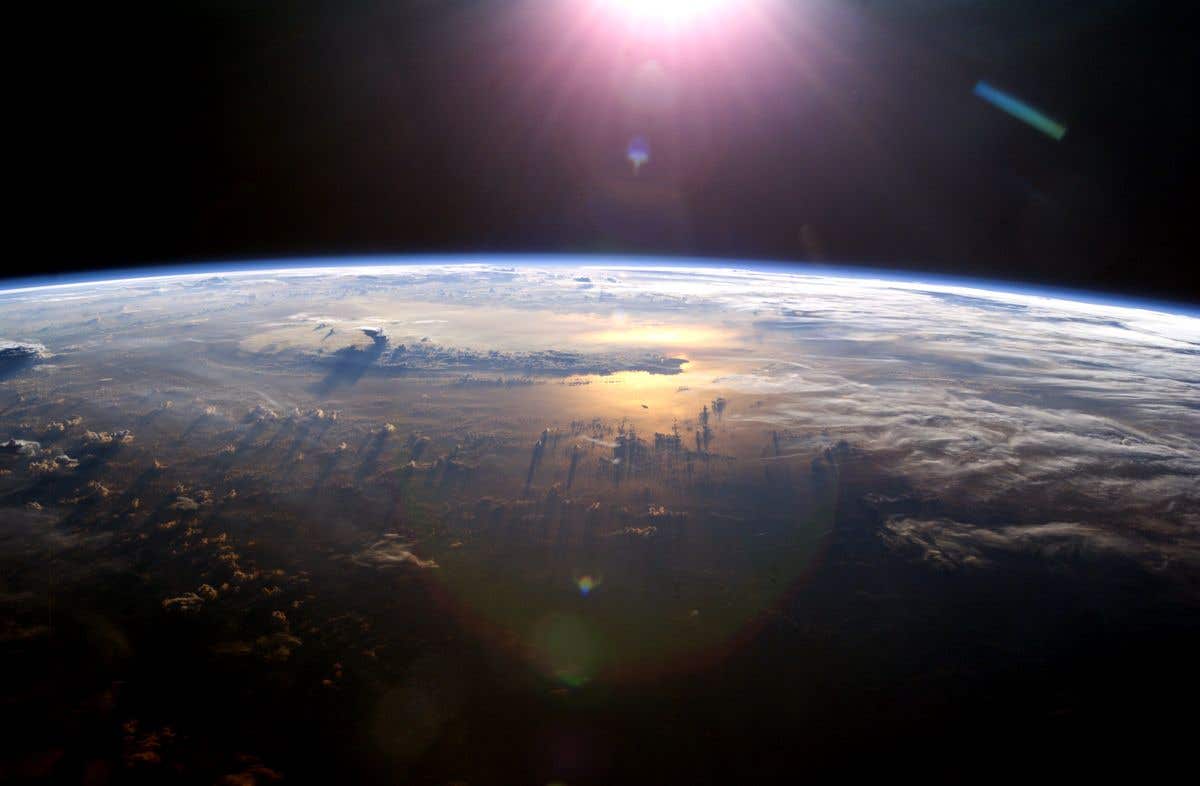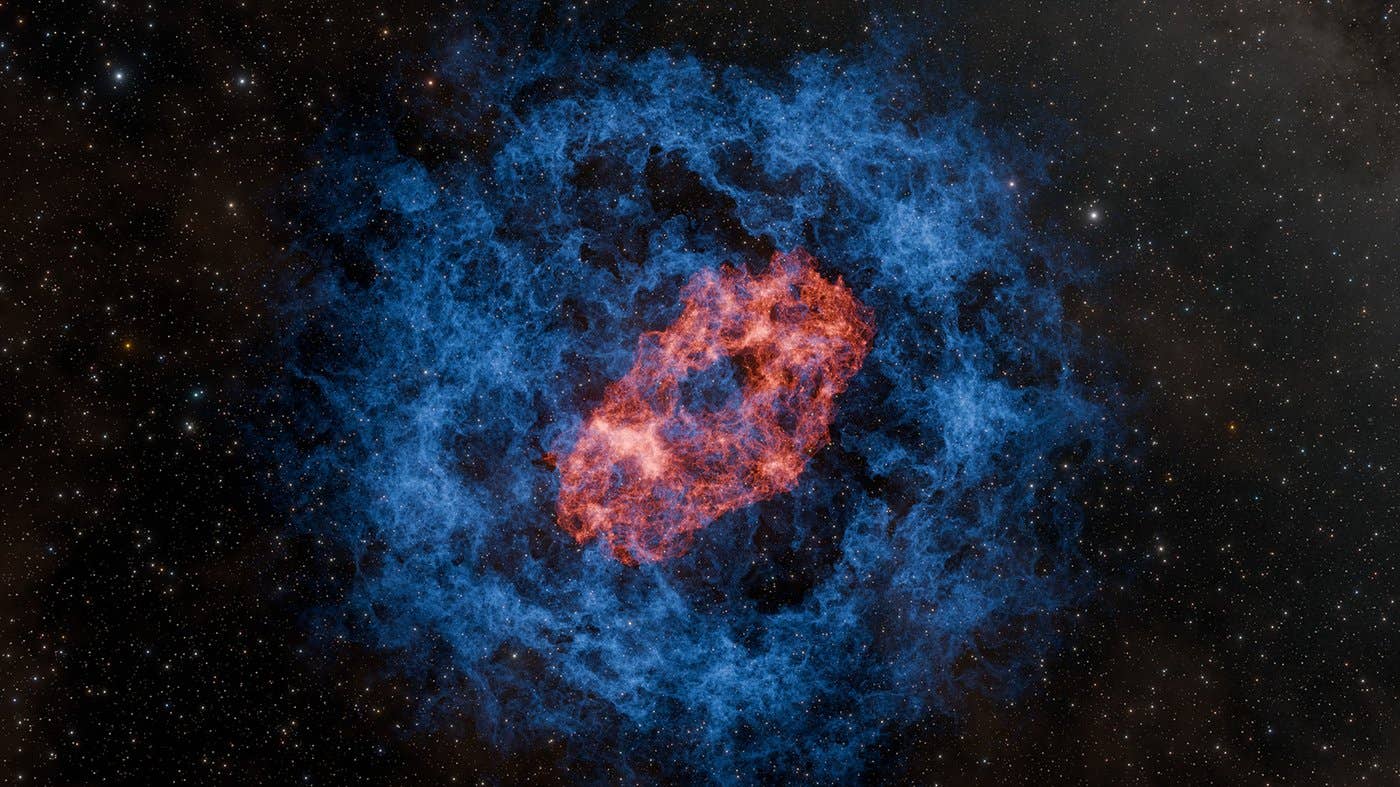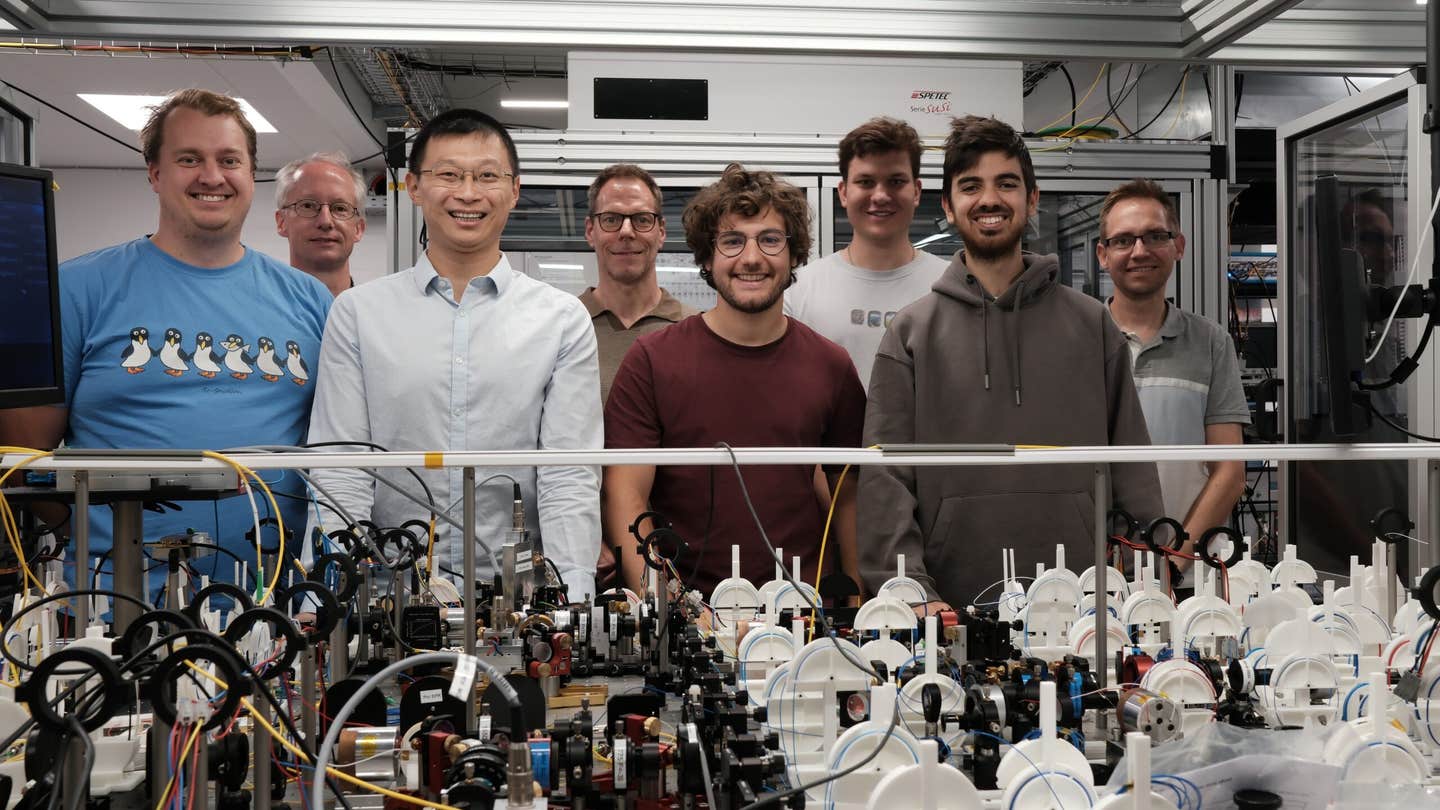Researchers discover where the nitrogen that spawned life on Earth originally came from
Research has shed light on the mysterious transport of nitrogen compounds to Earth’s vicinity during the early stages of our solar system.

[Dec. 2, 2023: JJ Shavit, The Brighter Side of News]
Research has shed light on the mysterious transport of nitrogen compounds to Earth's vicinity during the early stages of our solar system.. (CREDIT: ISS Expedition 7 Crew, EOL, NASA)
In a groundbreaking discovery, an international team of scientists, including researchers from the University of Hawai'i at Mānoa, has shed light on the mysterious transport of nitrogen compounds to Earth's vicinity during the early stages of our solar system. This revelation, published in Nature Astronomy, has the potential to reshape our understanding of how life-giving elements reached our planet billions of years ago.
"Our recent findings suggest the possibility that a greater amount of nitrogen compounds than previously recognized was transported near Earth, potentially serving as building blocks for life on our planet," says Hope Ishii, affiliate faculty at the Hawai'i Institute of Geophysics and Planetology in the UH Mānoa School of Ocean and Earth Science and Technology (SOEST), and a co-author of the study.
The journey begins with micrometeorites originating from distant icy celestial bodies within the outer reaches of the Solar System. These tiny cosmic travelers, often overlooked, are now emerging as key players in the cosmic delivery of nitrogen to Earth.
At the heart of this discovery lies Ryugu, an intriguing asteroid rich in carbon that orbits the sun like any other celestial object in our solar neighborhood. Ryugu earned its moment in the scientific spotlight when the Japan Aerospace Exploration Agency's Hayabusa2 spacecraft embarked on a mission to explore its surface, eventually bringing precious samples back to Earth in 2020. This venture aimed to uncover the secrets hidden within the asteroid's material, secrets that could provide invaluable insights into the origins of vital elements.
Related Stories
Ryugu's unique attributes make it a remarkable celestial laboratory. Over the eons, this small rocky body has experienced significant space weathering, resulting from countless micrometeorite collisions and prolonged exposure to charged ions emanating from the sun. It is this cosmic ballet of impacts and interactions that piqued the curiosity of researchers.
The study's primary objective was to decipher the story inscribed in the Ryugu samples, hoping to shed light on the materials that arrive near Earth's orbit, where Ryugu currently resides. Employing advanced techniques, including electron microscopy, the scientists made a startling discovery: the surface of Ryugu's samples was adorned with tiny mineral formations composed of iron and nitrogen, known as iron nitride (Fe4N).
Toru Matsumoto, assistant professor at Kyoto University and the lead author of the study, explains the groundbreaking revelation: "We proposed that tiny meteorites, called micrometeorites, containing ammonia compounds were delivered from icy celestial bodies and collided with Ryugu. The micrometeorite collisions trigger chemical reactions on magnetite and lead to the formation of the iron nitride."
Ryugu's unique attributes make it a remarkable celestial laboratory. Over the eons, this small rocky body has experienced significant space weathering, resulting from countless micrometeorite collisions. (CREDIT: JAPAN AEROSPACE EXPLORATION AGENCY (JAXA))
This observation of iron nitride on the surface of magnetite, a compound consisting of iron and oxygen atoms, uncovers a remarkable process that occurs in the unforgiving vacuum of space. As magnetite confronts the harsh space environment, it undergoes a transformation. Oxygen atoms are gradually stripped from its surface, a consequence of relentless bombardment by hydrogen ions from the solar wind and the intense heat generated by micrometeorite impacts.
This metamorphosis results in the formation of metallic iron on the outermost layer of magnetite. This newly formed metallic iron serves as a catalyst, readily reacting with ammonia compounds that may have arrived via micrometeorites. These conditions are ideal for the synthesis of iron nitride, marking a pivotal moment in understanding the transport and transformation of essential compounds in our solar system's early days.
Magnetite particles found in samples from the asteroid Ryugu. The magnetite grains have a round shape because they grew in water flowed in the asteroid. The surface of magnetite is very porous, and this feature is only seen on surfaces exposed to the harsh space environment. (CREDIT: KyotoU/Toru Matsumoto)
The significance of this discovery extends beyond the realm of scientific curiosity. Nitrogen compounds, such as ammonium salts, are abundant in regions far from the sun. Until now, the mechanism responsible for transporting these compounds to Earth's orbital vicinity remained enigmatic. This research provides a compelling explanation, hinting at the possibility that nitrogen-rich micrometeorites from icy celestial bodies acted as cosmic couriers, ferrying essential building blocks for life to our planet.
Hope Ishii underscores the potential implications of this discovery: "Our recent findings suggest the possibility that a greater amount of nitrogen compounds than previously recognized was transported near Earth, potentially serving as building blocks for life on our planet."
Modified magnetite and iron sulfides on a Ryugu grain. (CREDIT: Nature Astronomy)
The implications of these findings are profound. They not only enhance our understanding of Earth's early history but also offer insights into the potential distribution of life-supporting elements across the cosmos. Furthermore, this revelation opens the door to further investigations into the role of micrometeorites in shaping the composition of celestial bodies and their potential influence on the emergence of life.
As we continue to explore the mysteries of our solar system's distant past, it is clear that small, seemingly insignificant cosmic travelers like micrometeorites may hold the key to unraveling some of the universe's most profound secrets. The story of nitrogen's journey from the outer Solar System to Earth's vicinity is a testament to the tenacity of scientific inquiry and the boundless wonders of the cosmos.
The paper "Influx of nitrogen-rich material from the outer Solar System indicated by iron nitride in Ryugu samples" appeared on 30 November 2023 in Nature Astronomy, with doi: 10.1038/s41550-023-02137-z.
For more science and technology stories check out our New Discoveries section at The Brighter Side of News.
Note: Materials provided above by The Brighter Side of News. Content may be edited for style and length.
Like these kind of feel good stories? Get the Brighter Side of News' newsletter.



